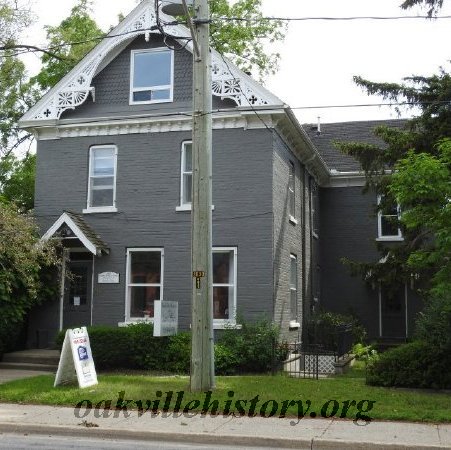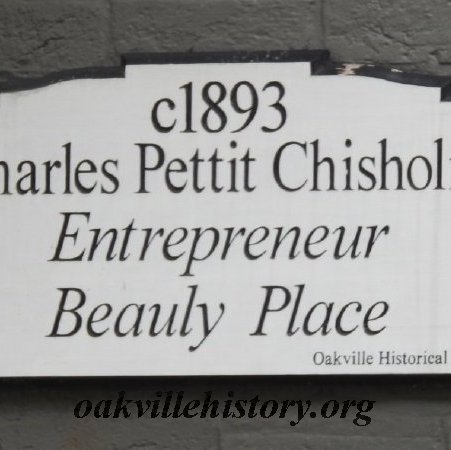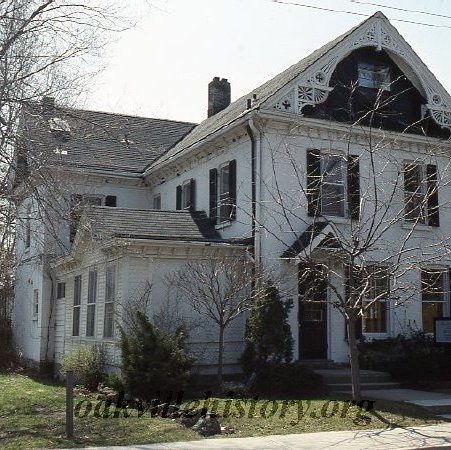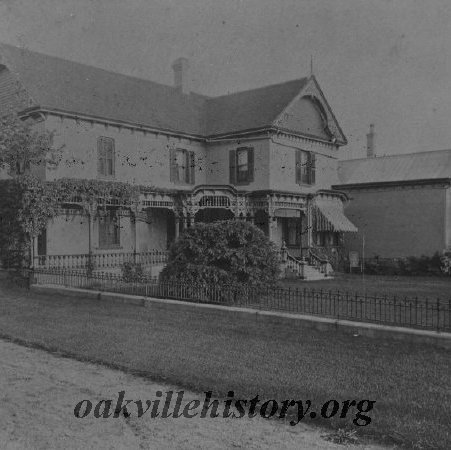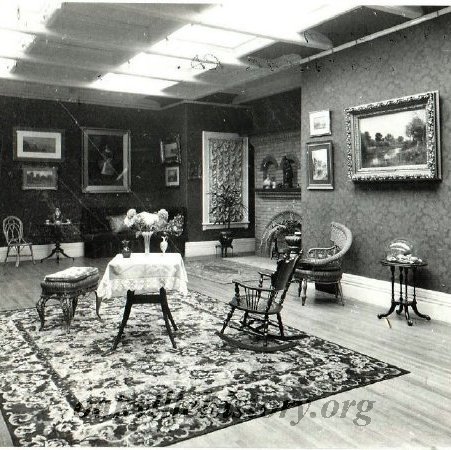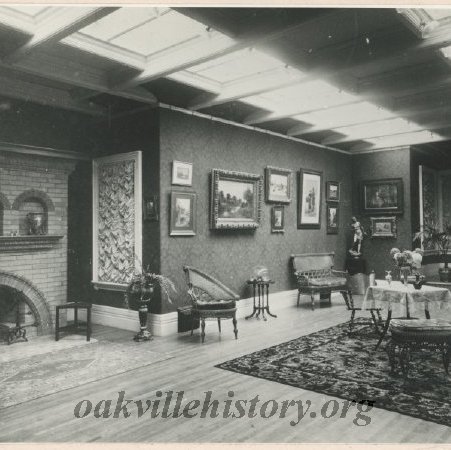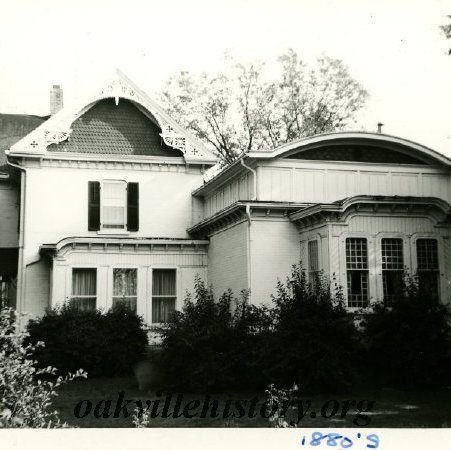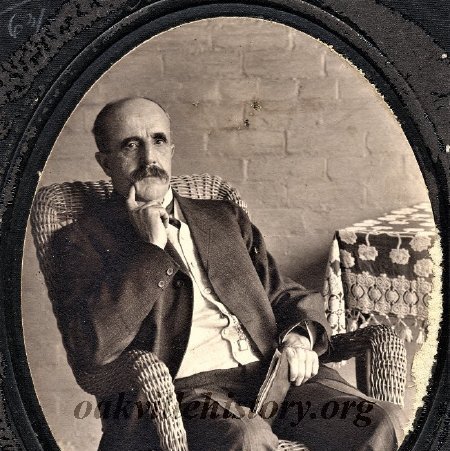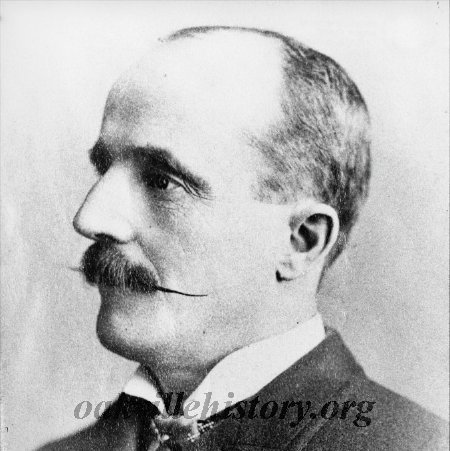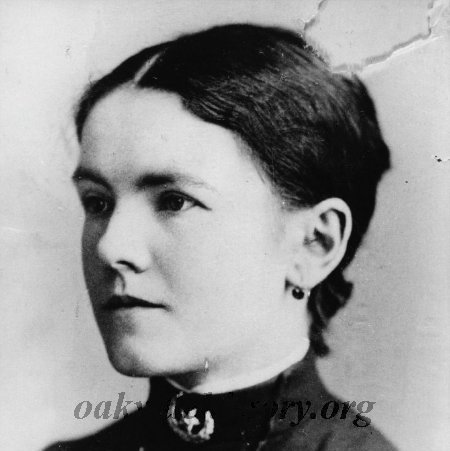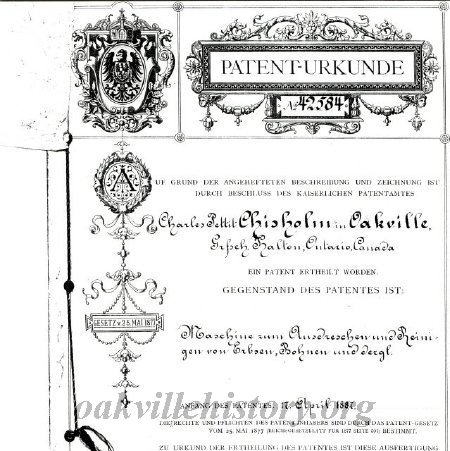Address:
164 Trafalgar Road - The Charles Pettit and Christina Kate Chisholm House
Summary:
This was one of the last great houses built in the 19th century in Oakville.
Property Details:
This property was purchased in 1839 from William Chisholm by his son John Alexander Chisholm who lived farther north on a large farm. John's wife was Sarah Pettit Bigger, daughter of Charles Bigger and Sarah Pettit of Trafalgar Township. They had four sons on their farm and by 1871 employed four men and eight boys making baskets for the fruit trade. They could make up to 300,000 baskets during the winter months. John's son, Charles, developed a machine for paring logs and he and his brother William developed a basket factory at the empty Victoria Brewery further up Trafalgar Road.
In 1877 the partnership dissolved and Charles and another brother, John Alexander, developed a method of processing vegetables by evaporation. They soon had in operation five kilns in which finely cut cabbages, potatoes, corn, turnips, peas, and apples were evaporated on a revolving screen over a fire pit. After being packaged in one-pound paste board boxes in a building that was at the present site of now nos. 407 and 407 Inglehart Avenue the vegetables were sold in large quantities to the British government and used by the Royal Navy in all parts of the world for making soup.
The brothers' greatest success, however, was the invention of devices to replace the slow and expensive processes of harvesting and podding of peas by hand. In I887 the brothers discovered that green peas could be hulled by impacting the pods, at a comparatively gentle velocity, while falling through the air. Their machine, patented first in Germany and later in the United States," extracted the peas undamaged; but the problem of separating peas from pods baffled the Chisholms until help was received from a chance acquaintance John made in the United States.
Because of the inability of country packers to obtain an adequate supply of hand pickers the packing of green peas was practically confined to the city of Baltimore where Black labour was plentiful. It was here that John Chisholm, while attending a canning convention, fell into casual conversation with an inventor from Ohio, Robert P. Scott. The two men exchanged hard-luck stories, and it soon became evident that Scott had discovered how to separate peas from vines, and that his invention could eliminate the most serious kink in the Chisholms' machine. Scott and the two Chisholms entered into partnership and were successful in perfecting the viner process. The pea vines were harvested by a threshing machine and hauled to the viner, a machine almost the size of a box car, which was set up on the field under a shed. The vines were fed into it like so much hay; through one opening rolled the peas, graded as to size, and through another opening came the vines for the silo or waste pile. Their viner machine could accomplish in a day the work previously done by over 600 workers.
In 1881 Charles married his second cousin, Christina Kate Chisholm. As a young girl, she had launched the schooner White Oak for her father, George Brock Chisholm on the first Dominion Day, 1 July 1867. They had no children. The brothers developed a machine that could shell peas and entered into a partnership in New York State. The company became Chisholm Ryder and closed in the 1950s.
By 1866 a tenant, Reverend R. Scott, lived in a modest house on the site. In 1890 Charles was a tenant here and purchased the property a year later. This house was built by 1894. "It forms an 'L' shape with a gable end facing the street. Originally a verandah bordered the house on two sides, with rows of spool-work and a series of fretwork bracketed columns that served to disguise the unbalanced window arrangement of the front facade. Once crowned with king posts, the gable ends, faced with decorative wooden shingles, still exhibit enormous bargeboards composed of a complex geometric design that includes fans, quatrefoils and sunburst patterns. The ballroom that extends northward from the rear of the structure was added shortly after the house was built and was the scene of many parties and large family gatherings. A massive brick fireplace displaying three recessed niches is set in a bay on the westerly wall, while the orchestra at one time performed from a raised platform in a bay that projects from the north end of the ballroom.
The Charles Pettit Chisholm House is one of the last great houses built in the nineteenth century in old Oakville. Charles died in 1914 but his widow, Kate, lived here until 1923. In 1940 she gave the property to Esther Lawson Chisholm, widow of her nephew, James McCraney Chisholm. It was the site of many large Chisholm gatherings until the late 1950s. Many local girls took dance lessons in the ballroom from Esther's daughters, Mary and Nancy. On Esther Chisholm's death the property was sold and the house was split into apartments.
In 1877 the partnership dissolved and Charles and another brother, John Alexander, developed a method of processing vegetables by evaporation. They soon had in operation five kilns in which finely cut cabbages, potatoes, corn, turnips, peas, and apples were evaporated on a revolving screen over a fire pit. After being packaged in one-pound paste board boxes in a building that was at the present site of now nos. 407 and 407 Inglehart Avenue the vegetables were sold in large quantities to the British government and used by the Royal Navy in all parts of the world for making soup.
The brothers' greatest success, however, was the invention of devices to replace the slow and expensive processes of harvesting and podding of peas by hand. In I887 the brothers discovered that green peas could be hulled by impacting the pods, at a comparatively gentle velocity, while falling through the air. Their machine, patented first in Germany and later in the United States," extracted the peas undamaged; but the problem of separating peas from pods baffled the Chisholms until help was received from a chance acquaintance John made in the United States.
Because of the inability of country packers to obtain an adequate supply of hand pickers the packing of green peas was practically confined to the city of Baltimore where Black labour was plentiful. It was here that John Chisholm, while attending a canning convention, fell into casual conversation with an inventor from Ohio, Robert P. Scott. The two men exchanged hard-luck stories, and it soon became evident that Scott had discovered how to separate peas from vines, and that his invention could eliminate the most serious kink in the Chisholms' machine. Scott and the two Chisholms entered into partnership and were successful in perfecting the viner process. The pea vines were harvested by a threshing machine and hauled to the viner, a machine almost the size of a box car, which was set up on the field under a shed. The vines were fed into it like so much hay; through one opening rolled the peas, graded as to size, and through another opening came the vines for the silo or waste pile. Their viner machine could accomplish in a day the work previously done by over 600 workers.
In 1881 Charles married his second cousin, Christina Kate Chisholm. As a young girl, she had launched the schooner White Oak for her father, George Brock Chisholm on the first Dominion Day, 1 July 1867. They had no children. The brothers developed a machine that could shell peas and entered into a partnership in New York State. The company became Chisholm Ryder and closed in the 1950s.
By 1866 a tenant, Reverend R. Scott, lived in a modest house on the site. In 1890 Charles was a tenant here and purchased the property a year later. This house was built by 1894. "It forms an 'L' shape with a gable end facing the street. Originally a verandah bordered the house on two sides, with rows of spool-work and a series of fretwork bracketed columns that served to disguise the unbalanced window arrangement of the front facade. Once crowned with king posts, the gable ends, faced with decorative wooden shingles, still exhibit enormous bargeboards composed of a complex geometric design that includes fans, quatrefoils and sunburst patterns. The ballroom that extends northward from the rear of the structure was added shortly after the house was built and was the scene of many parties and large family gatherings. A massive brick fireplace displaying three recessed niches is set in a bay on the westerly wall, while the orchestra at one time performed from a raised platform in a bay that projects from the north end of the ballroom.
The Charles Pettit Chisholm House is one of the last great houses built in the nineteenth century in old Oakville. Charles died in 1914 but his widow, Kate, lived here until 1923. In 1940 she gave the property to Esther Lawson Chisholm, widow of her nephew, James McCraney Chisholm. It was the site of many large Chisholm gatherings until the late 1950s. Many local girls took dance lessons in the ballroom from Esther's daughters, Mary and Nancy. On Esther Chisholm's death the property was sold and the house was split into apartments.
Click to Enlarge
